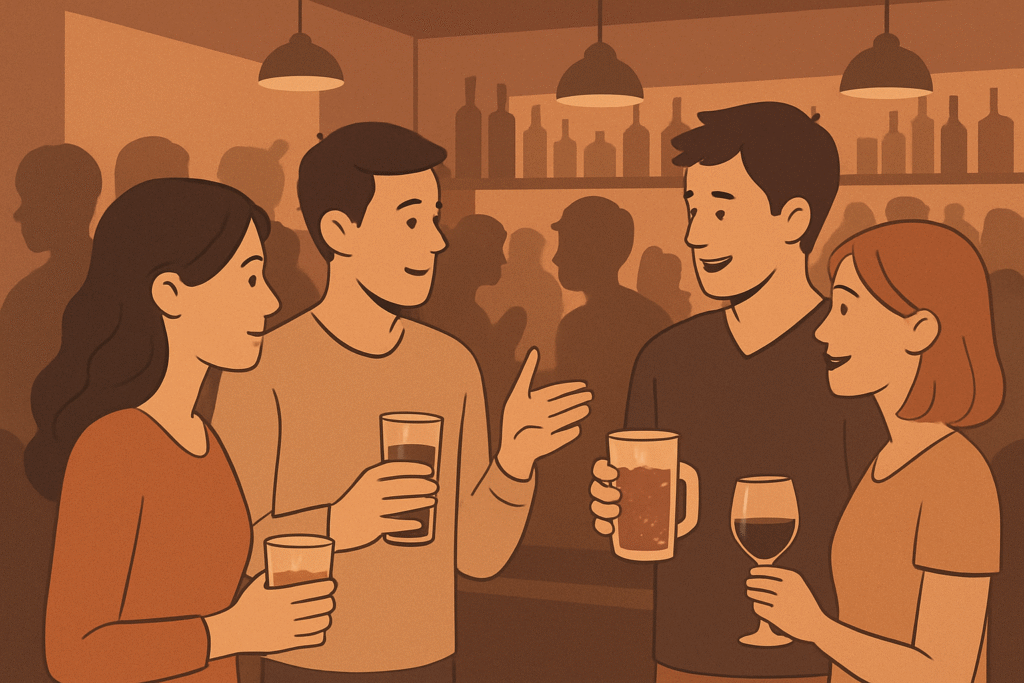
You’ve checked Maps and your favorite café looks “busy.” Should you go anyway? You text a friend: “Last Thursday it was packed, so today might be fine.” That’s you doing what most of us do when things are uncertain. Not perfect math. Just pattern-spotting and a best guess. Economist W. Brian Arthur says that expecting people to use flawless, step-by-step logic in real life is unrealistic, especially when situations become complicated or when other people’s choices continually shift the game. In messy problems, strict logic runs out of road, and we fall back on simpler ways of thinking. We look for patterns, try a plan, see how it goes, and adjust. That’s normal, not lazy. It’s how humans cope when full information and crystal-clear rules aren’t available.
Arthur calls this inductive reasoning. Think of it like building little “if-this-then-that” mini-models in your head. You notice a pattern, form a quick hypothesis, act on it, and then update based on feedback. Chess players do this all the time: they spot familiar shapes on the board, guess what the opponent is aiming for, test a few moves in their head, and then keep or ditch their plan depending on what happens next. We do the same in everyday life—studying, dating, and job hunting. We try something that worked before, keep score in our minds, and switch tactics when it stops paying off. It’s learning on the fly, not waiting for the “perfect” answer that rarely exists in the wild.
To illustrate this, Arthur shares a simple story: a bar with 100 potential customers. It’s fun only if fewer than 60 show up. Nobody can know attendance for sure. Each person looks at past weeks and uses a small rule to predict next week: “same as last week,” “average of the last four,” “two-week cycle,” and so on. If your rule says it won’t be crowded, you go; if it says it will, you stay home. No secret coordination. Just lots of small, private guesses. Now the cool part: across time, people’s rules “learn,” and the whole crowd stabilizes around an average of 60—yet the specific rules people rely on keep changing. It’s like a forest with a stable shape but trees that come and go. Expectations can’t all match because if everyone believes “it’ll be empty,” then everyone goes and it’s crowded; if everyone believes “it’ll be packed,” no one goes and it’s empty. As a result, people end up holding different views, and the mix keeps things balanced.
Why should you care? Because life is that bar. Group projects, trending restaurants, sneaker drops, and even pricing a side hustle—all are moving targets shaped by other people’s guesses. Arthur’s point is practical: don’t wait for perfect logic. Build simple rules from real signals, keep track of what works, and be prepared to adjust strategies when they stop delivering results. Small, adaptable rules often outperform rigid “one true plan” in social settings that are constantly evolving. That’s how markets, negotiations, poker nights, and product launches often behave—cycling through temporary patterns instead of settling into one eternal formula. Use patterns, measure results, and iterate. That’s not second-best thinking. It’s the kind that actually wins when everyone else is also deciding at the same time.
Reference:
Arthur, W. B. (1994). Inductive Reasoning and Bounded Rationality. Papers and Proceedings of the Hundred and Sixth Annual Meeting of the American Economic Association, 84(2), 406–411. https://www.jstor.org/stable/2117868
Privacy Notice & Disclaimer:
This blog provides simplified educational science content, created with the assistance of both humans and AI. It may omit technical details, is provided “as is,” and does not collect personal data beyond basic anonymous analytics. For full details, please see our Privacy Notice and Disclaimer. Read About This Blog & Attribution Note for AI-Generated Content to know more about this blog project.